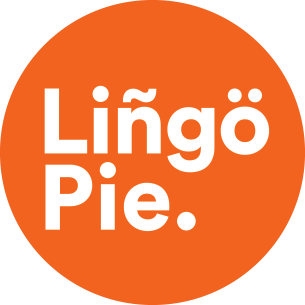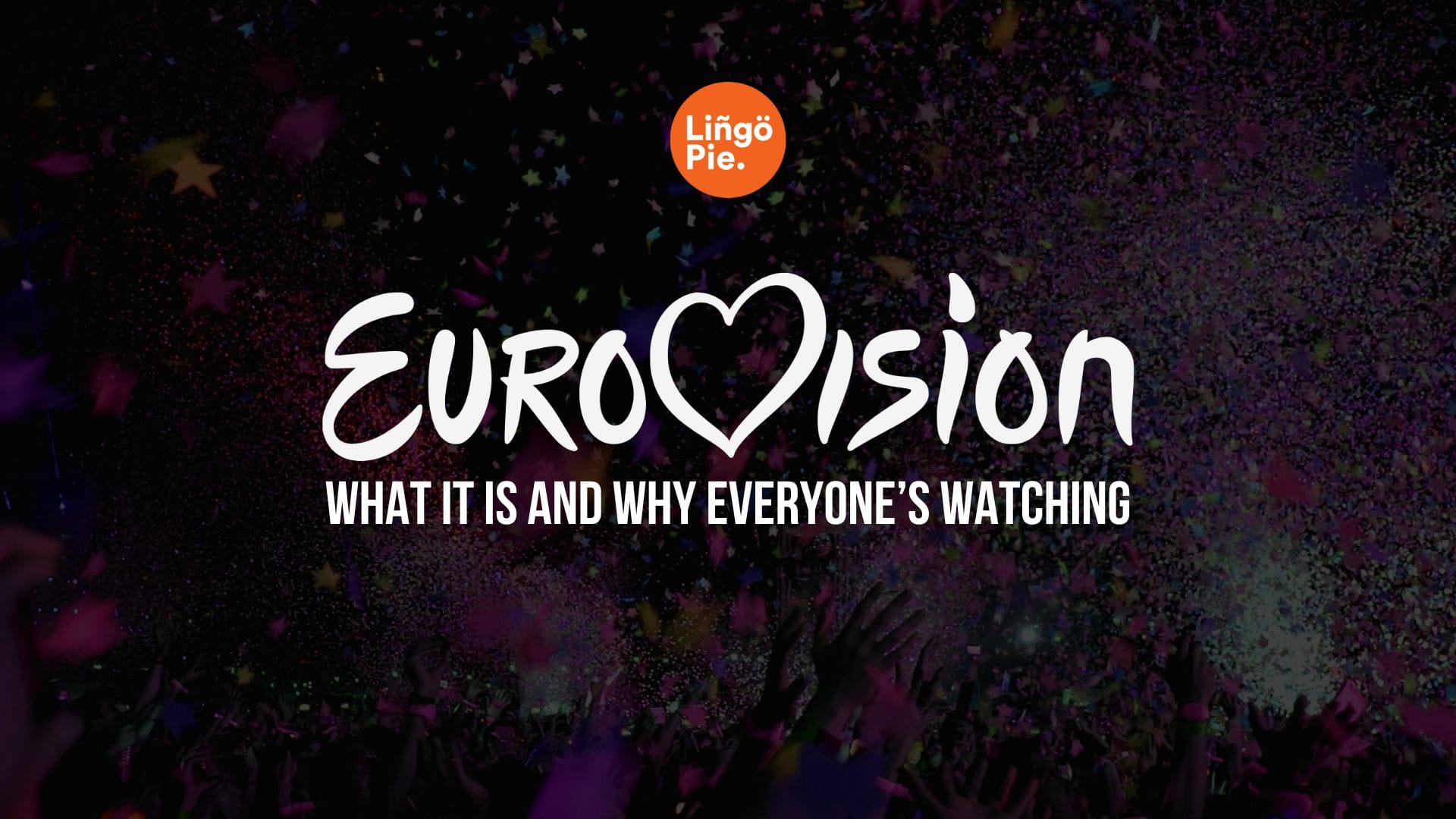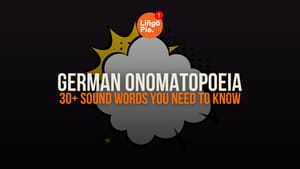Have you ever confidently walked into a Swiss café, ready to order and ask directions in German, only to stare blankly when the server responded in what sounded like a completely different language? Don’t worry... you’re not going crazy! That’s Swiss German, and even Germans from Berlin or Munich might need subtitles to understand what's being said.
So what exactly makes Swiss German different from the standard one? In this guide, we’ll break down the key differences, explain the unique language situation in Switzerland, and give you practical tips to help you avoid that deer-in-headlights moment the next time a Swiss person asks you "Wie geht's?"
- 10+ Easy German Short Stories For Beginners
- 5 German Cooking Shows For Learning Culinary Terms
- 20 Easy German Slang & Phrases You Need to Learn

What Is Swiss German?
Swiss German (also known as Schweizerdeutsch) is not actually a single language but an umbrella term for the various Alemannic dialects spoken in the German-speaking parts of Switzerland. Each canton (region) in Switzerland has its own distinct dialect, and some are so different that people from Germany struggle to understand them.
What Is Standard German?
Standard German (also called Schriftdeutsch) is the official standardized version of the German language used in formal settings, education, and written communication. It's commonly used in formal contexts along with education, media, and government functions across German-speaking countries, including Germany, Austria, and parts of Switzerland.
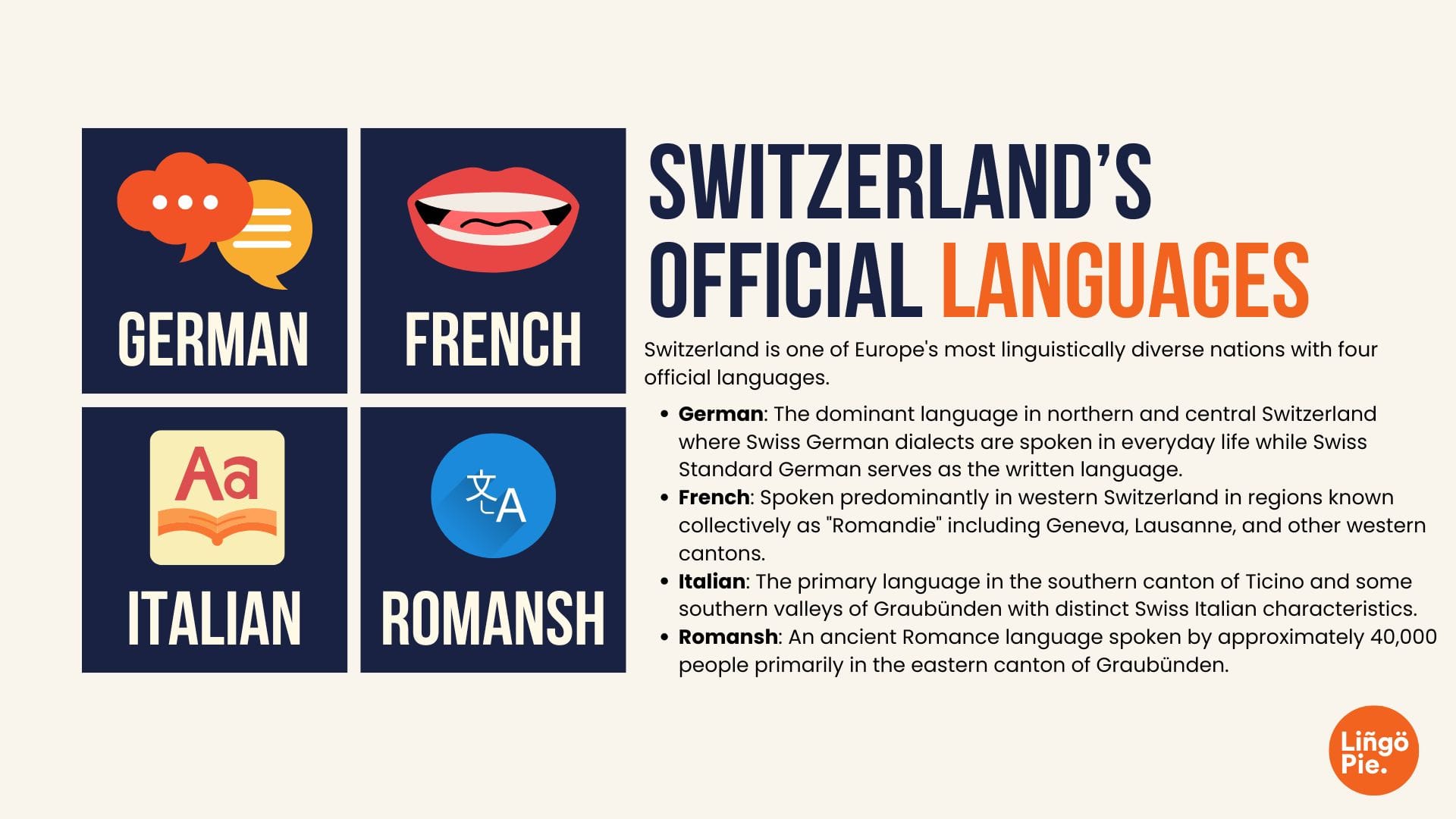
How Swiss German Evolved
While standard German underwent what linguists call the "High German consonant shift" centuries ago, Swiss German dialects retained many older linguistic features. The isolation provided by Switzerland’s mountainous geography allowed these dialects to develop independently, preserving archaic forms while also incorporating influences from neighboring French and Italian languages due to Switzerland’s position at the crossroads of European cultures.
Today, Standard German is one of the four official languages in German-speaking Switzerland, used in books, official publications, laws, regulations, newspapers, and most advertising. Meanwhile, Swiss German dialects are primarily spoken languages with no standardized written form, used in everyday conversations.
5 Key Differences Between Swiss German And Standard German
1. Pronunciation Differences
The main difference between Swiss and Standard German is pronunciation. One particularly characteristic example is the "ch" sound, which is pronounced in a more guttural way in Swiss German, and tends to be used where a "k" sound would be produced in Standard German. For example, "kalt" (cold) becomes "chalt" in Swiss German.
Swiss German also doesn't use diphthongs (double vowel sounds) the same way standard German does – vowels are often pronounced as separate sounds.
2. Vocabulary Variations
Swiss German borrows English words for technological innovations while standard German often coins new German words. There's also significant French influence in Swiss German vocabulary. Examples include "Velo" (bicycle) in Swiss German versus "Fahrrad" in standard German, and "Trottoir" (sidewalk) versus "Gehsteig." This influence creates many "Helvetisms” or words and expressions unique to Swiss German speakers.
3. Grammatical Structure
Swiss German has different grammatical structures, particularly in how the genitive case is used. Where someone speaking Standard German would say "Die Jacke des Mannes" (the guy's jacket), someone speaking Swiss German would say "Die Jacke von Mann" (the jacket of the guy). Swiss German tends to simplify or eliminate the genitive case entirely, using prepositions instead.
4. Writing System Differences
One prominent difference is the lack of –ß (sharp "s") in Swiss Standard German. Where you would spell the color white "weiß" in Standard German, Swiss Standard German spells it "weiss," using "ss" instead. This originated partly because Swiss typewriters needed to accommodate multiple languages and omitted the ß character.
5. Verb Tenses Simplification
Swiss German speakers often use fewer tenses than standard German speakers. They typically use the present perfect tense instead of the simple past. Instead of saying "Ich ging nach Hause" (I went home), they use "Ich bi nach huus gange" (I have gone home). The simple past tense is rarely used in everyday spoken Swiss German.

Can Germans understand Swiss German?
It depends! Swiss German speakers can choose to make their expressions understandable to standard German speakers since the foundation of the language is still the same. However, most Germans struggle to understand Swiss German dialects without exposure or practice. The pronunciation, vocabulary, and grammatical differences may create significant barriers to comprehension.
Check out our examples below to help show the differences in the vocabulary of Swiss German words and standard German.
| Meaning | Swiss German | Standard German |
|---|---|---|
| Breakfast | Zmorge | Frühstück |
| Bicycle | Velo | Fahrrad |
| Sidewalk | Trottoir | Gehsteig |
| Potato | Härdöpfel | Kartoffel |
| Kitchen cupboard | Chüchichäschtli | Küchenschrank |
| Hello | Grüezi | Guten Tag |
| Garbage | Ghüder | Müll |
| Butcher | Metzger | Fleischer |
Usage In Switzerland
The concurrent usage of Swiss Standard German and Swiss German dialects is a case of diglossia. Swiss Standard German is used in formal and public settings like education, government, and national news, while in informal situations, Swiss German dialects are used regardless of social class or education level.
This means most Swiss people are proficient in both their local dialect for daily conversation and Swiss Standard German for official contexts. Even in formal education, students might receive instruction in Standard German but discuss the lesson in Swiss German during breaks.
Swiss German Dialects
Swiss German refers not to a single dialect but a group of dialects known as 'Alemannic.' Each Swiss canton and even towns within cantons can have their unique version of Swiss German. Some of these include:
- Zürich German: Spoken in and around Zürich, Switzerland's largest city
- Bernese German: Used in the capital region of Bern
- Basel German: Has unique features due to its location at the border with France and Germany
- Walliser German: Spoken in the Valais canton, considered one of the most distinctive and difficult to understand
The differences between these dialects can involve pronunciation, vocabulary, and even grammatical elements, though speakers of different Swiss German dialects can usually understand each other.
- 5 German Reality Shows On Netflix To Binge This Yearhear
- 20 German Intermediate Movies on Netflix
- 25 German Movies And Series To Learn German Fast
Common Misconceptions About Swiss German
"It's Just German with an Accent"
Swiss German isn't simply standard German with a different pronunciation. It's a collection of distinct dialects with their own vocabulary, grammar, and history that developed independently from standard German.
For example, what sounds like "Ich habe das Fenster geöffnet" (I opened the window) in standard German becomes "Ich ha s'Fänschter ufta" in Swiss German - with different vocabulary, structure, and sound patterns that make it nearly unintelligible to standard German speakers.
"Swiss German is Written Just Like German"
While standard German is used for writing in Switzerland, Swiss German dialects don't have standardized spelling systems. When written (like in text messages or social media), spellings vary widely and are based on pronunciation.
For instance, the phrase "I don't know" might be written as "I weiss nöd" in Zürich, "I weiss nid" in Bern, and "I waiss nit" in Basel - all representing the same phrase but with spelling variations reflecting local pronunciation.
"All Swiss People Speak German"
Switzerland has four official languages. While about 63% of Swiss speak German or Swiss German, many Swiss citizens speak French (23%), Italian (8%), or Romansh (0.5%) as their primary language. A Swiss citizen from Geneva might speak little to no German at all, communicating primarily in French.
What Should You Focus On?
If you're learning German with plans to visit or live in Switzerland, you should focus on standard German first, as it's taught in schools and used in formal settings. However, be aware of the key differences highlighted above, especially in pronunciation and vocabulary.
Although Swiss German is the native language in the German-speaking part of Switzerland, Swiss school students are taught Swiss Standard German from the age of six. They are thus capable of understanding, writing, and speaking Standard German, with varying abilities.
An effective approach is to learn standard German to B1 level, then gradually introduce Swiss German features, focusing first on pronunciation differences and common vocabulary variations.
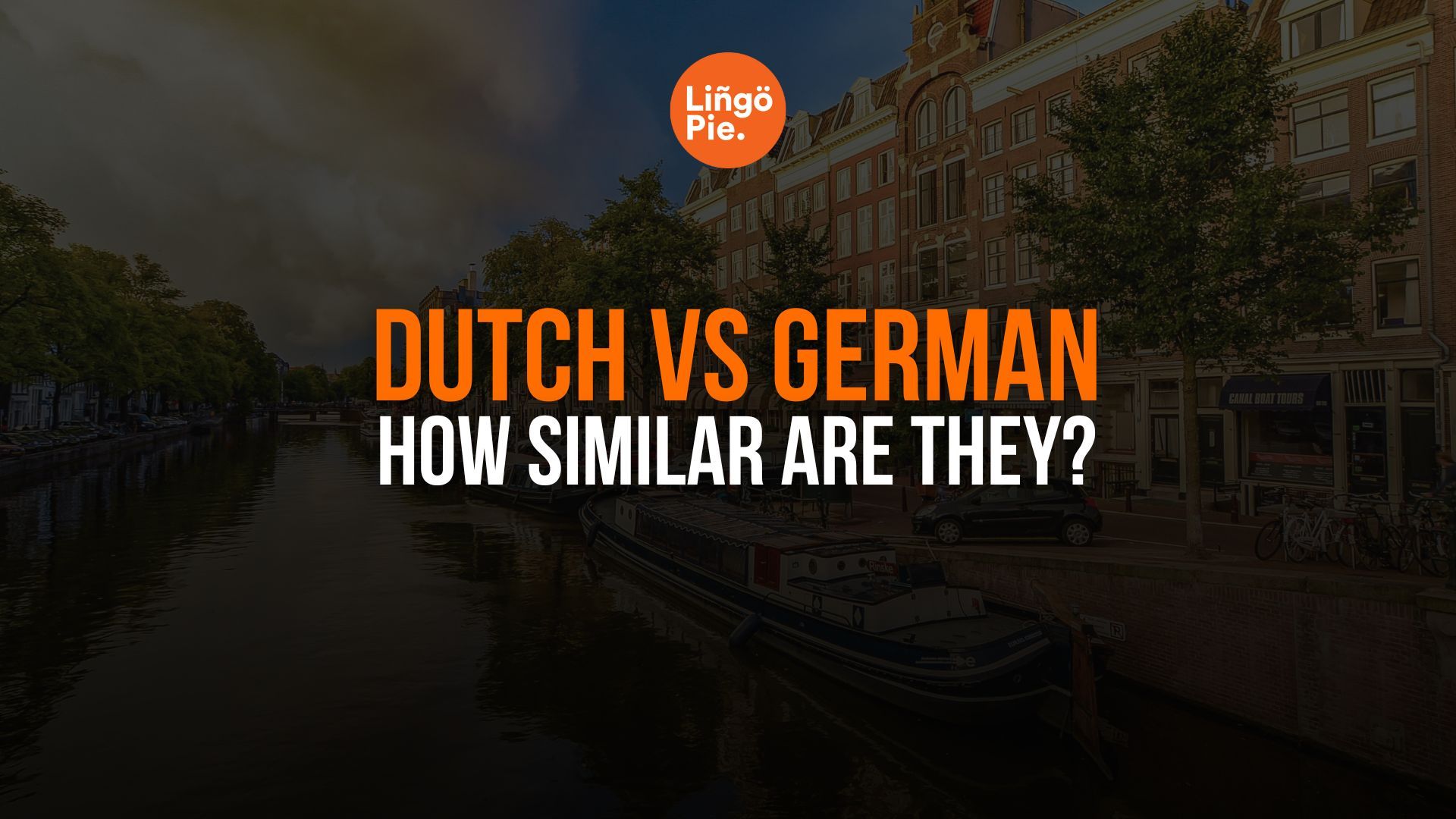
Final Thoughts
Swiss German and standard German showcase how languages evolve differently even in neighboring regions. The Swiss example is unique because dialects maintain high status in everyday life, unlike in many other European countries where standard languages have replaced regional dialects in daily use.
So next time you hear someone speaking Swiss German with its distinctive guttural sounds and French-influenced vocabulary, you'll understand that it's not just an accent - it's a rich collection of dialects with their own linguistic features and cultural importance!
Want To Learn German The Fun Way?
Now that you understand the fascinating differences between Swiss German and standard German, you might be inspired to start learning German yourself. If traditional textbooks and grammar drills don't excite you, there's a modern, engaging alternative: Lingopie.
Lingopie offers a unique approach to language learning through authentic German TV shows, movies, and other media content. Instead of memorizing vocabulary lists, you can watch entertaining German programs with interactive dual-language subtitles. Simply click on any word you don’t understand to see its translation and save it to review later with flashcards.
This immersive method helps you learn German the way native speakers actually use it - with real expressions, slang, and cultural context. Want to give it a try? Click below to get your FREE 7-day trial and start learning German the best way possible!
FAQ: Common Questions About Swiss German
Can Germans understand Swiss German?
Most Germans struggle to understand Swiss German dialects without exposure or practice. The pronunciation, vocabulary, and grammatical differences create significant barriers to comprehension. However, Swiss German speakers can usually understand standard German.
Is Swiss German taught in schools?
No, Swiss Standard German is taught in schools in German-speaking regions of Switzerland. Swiss German dialects are learned naturally through daily interaction rather than formal education.
Should I learn Standard German or Swiss German?
If you're planning to visit or live in Switzerland, start with Standard German as it's more widely useful and will allow you to communicate in Germany and Austria as well. You can then adapt to Swiss German dialect features once you have a solid foundation.
Is there a "best" resource for learning Swiss German?
There's no single best resource, but a combination of dialect dictionaries, local media, and conversation with native speakers works well. Apps like "Schweizerdeutsch lernen" can also help with specific dialects.



